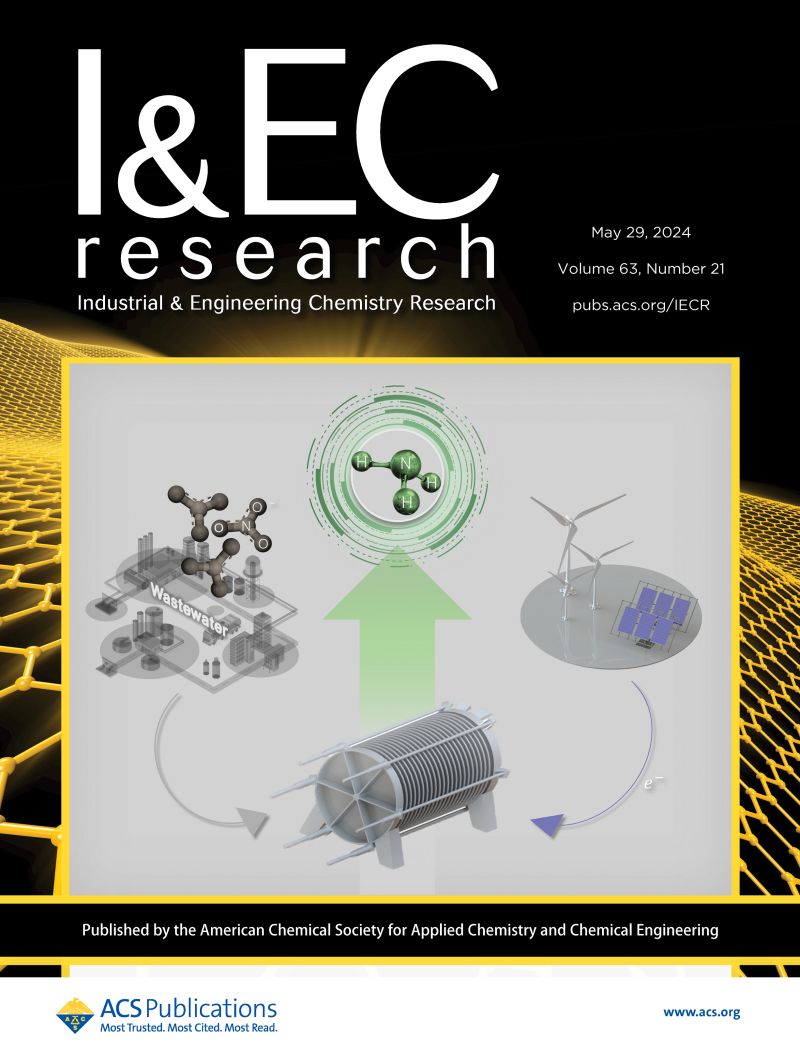Recovery of Rare Earth and Fluorine from Fluorinated Rare Earth Molten Salt Electrolytic Slag by Ball-Milling and Sodium Hydroxide Submolten Salt Processes
IF 3.8
3区 工程技术
Q2 ENGINEERING, CHEMICAL
引用次数: 0
Abstract
Fluorinated rare earth molten salt electrolytic slag (FRMES) is an important source of rare earths, containing large amounts of rare earth fluoride (REF3). Traditional technologies for recovering rare earths from FRMES mainly include acid and alkali roasting, with high energy consumption and heavy pollution. In this work, a low-consumption and efficient approach for the recovery of rare earths and fluorine from FRMES by ball milling and sodium hydroxide submolten salt (SHSS) was presented. The results showed that the dissociation efficiency of REF3 in the SHSS system was significantly improved by pre-ball milling, and the leaching efficiency of REF3 was 99% under the optimal leaching conditions (sodium hydroxide concentration of 300 g/L, leaching temperature of 180 °C, leaching time of 3 h, and liquid–solid ratio of 4:1). The leaching process of REF3 from ball-milled and unball-milled FRMES in the SHSS system was mainly controlled by mixed chemical reaction and internal diffusion, with apparent activation energies of 35.57 and 41.31 kJ/mol, respectively. The smaller grain size and more lattice defects of REF3 in ball-milled FRMES than in unball-milled FRMES resulted in the exposure of more active sites and lower reaction activation energies. The product RE(OH)3 wrapped around REF3 was the main reason for hindering the rapid dissociation of REF3 in unball-milled FRMES. The recovery efficiency of rare earths exceeded 96% by HCl preferential dissolution and solvent extraction processes, and F was recovered in the form of NaF. These results provide a low-energy and clean approach for the integrated treatment of FRMES with prospects for industrial application.

球磨法和氢氧化钠亚熔盐法从氟化稀土熔盐电解渣中回收稀土和氟
氟化稀土熔盐电解渣(FRMES)是稀土的重要来源,含有大量的稀土氟化物(REF3)。从FRMES中回收稀土的传统工艺主要是酸、碱焙烧,能耗高、污染重。介绍了采用球磨法和氢氧化钠亚熔盐法(SHSS)从FRMES中回收稀土和氟的一种低消耗、高效的方法。结果表明:在氢氧化钠浓度为300 g/L、浸出温度为180℃、浸出时间为3 h、液固比为4:1的最佳浸出条件下,预球磨可显著提高REF3在SHSS体系中的解离效率,REF3的浸出率可达99%。球磨和非球磨FRMES中REF3在SHSS体系中的浸出过程主要受混合化学反应和内部扩散控制,表观活化能分别为35.57和41.31 kJ/mol。与未球磨FRMES相比,球磨FRMES中REF3的晶粒尺寸更小,晶格缺陷更多,暴露的活性位点更多,反应活化能更低。产物RE(OH)3包裹着REF3是阻碍REF3在非球磨FRMES中快速解离的主要原因。采用HCl优先溶解法和溶剂萃取法,稀土的回收率超过96%,F以NaF的形式回收。这些结果为FRMES的综合处理提供了一条低能耗、清洁的途径,具有工业应用前景。
本文章由计算机程序翻译,如有差异,请以英文原文为准。
求助全文
约1分钟内获得全文
求助全文
来源期刊

Industrial & Engineering Chemistry Research
工程技术-工程:化工
CiteScore
7.40
自引率
7.10%
发文量
1467
审稿时长
2.8 months
期刊介绍:
ndustrial & Engineering Chemistry, with variations in title and format, has been published since 1909 by the American Chemical Society. Industrial & Engineering Chemistry Research is a weekly publication that reports industrial and academic research in the broad fields of applied chemistry and chemical engineering with special focus on fundamentals, processes, and products.
 求助内容:
求助内容: 应助结果提醒方式:
应助结果提醒方式:


